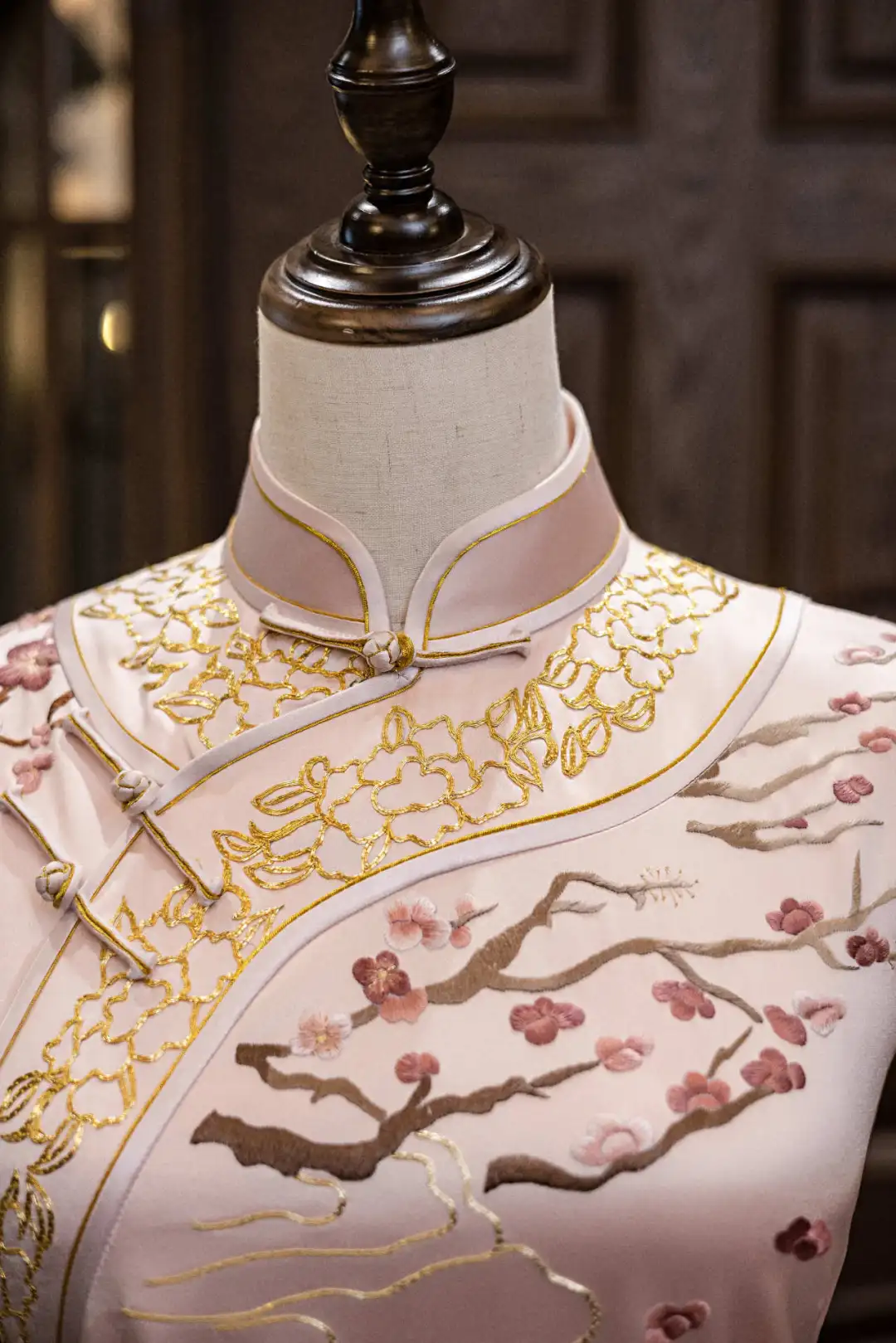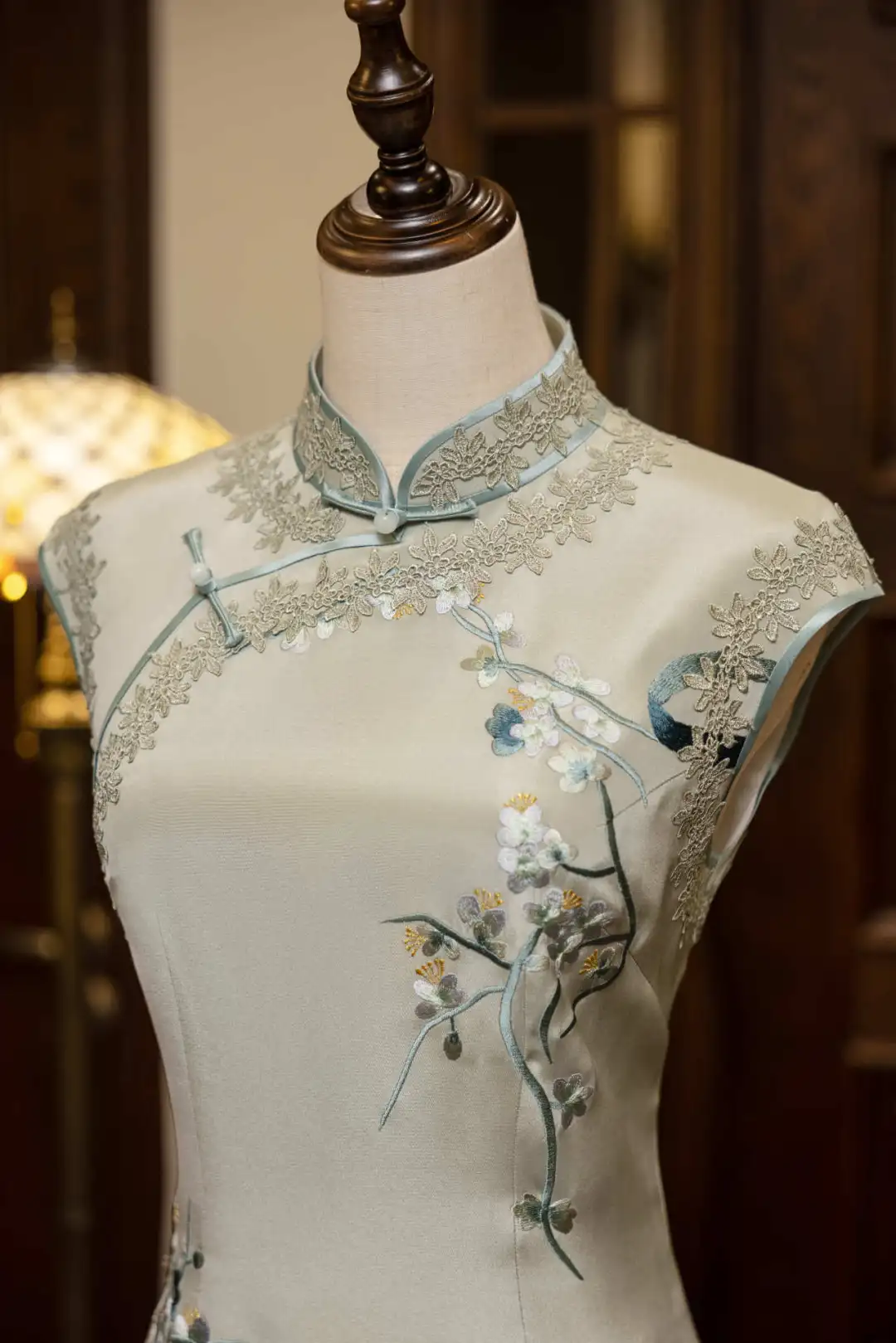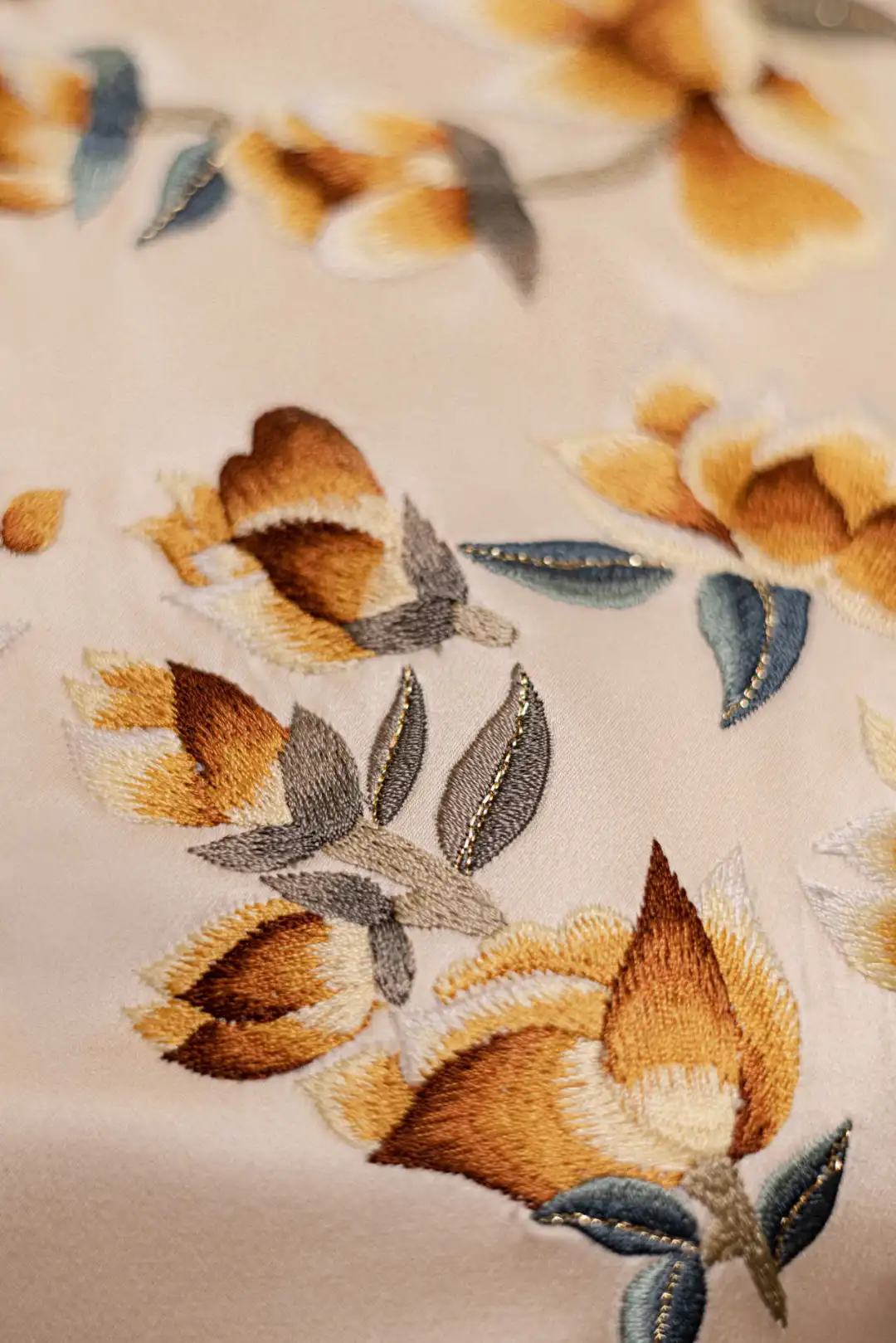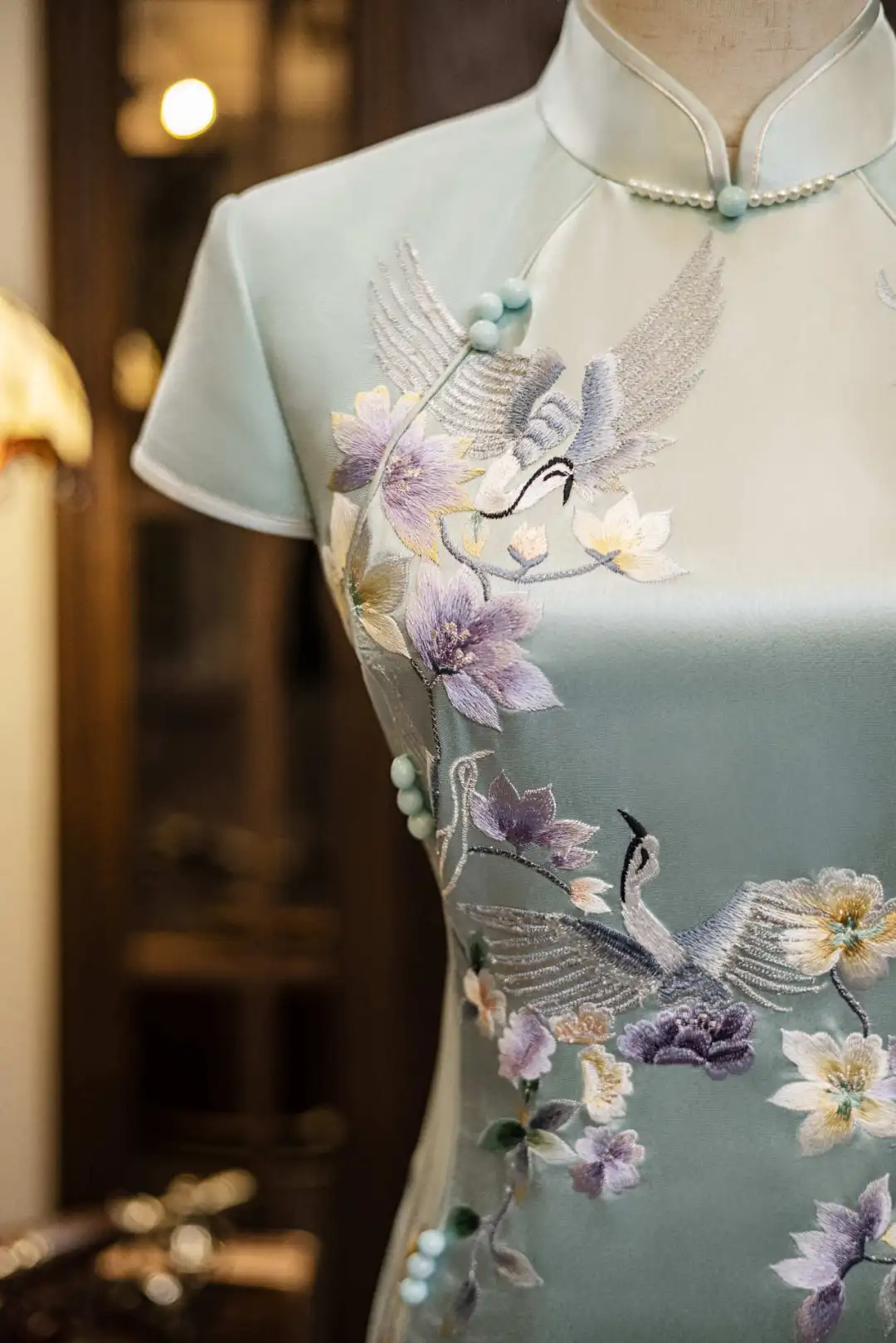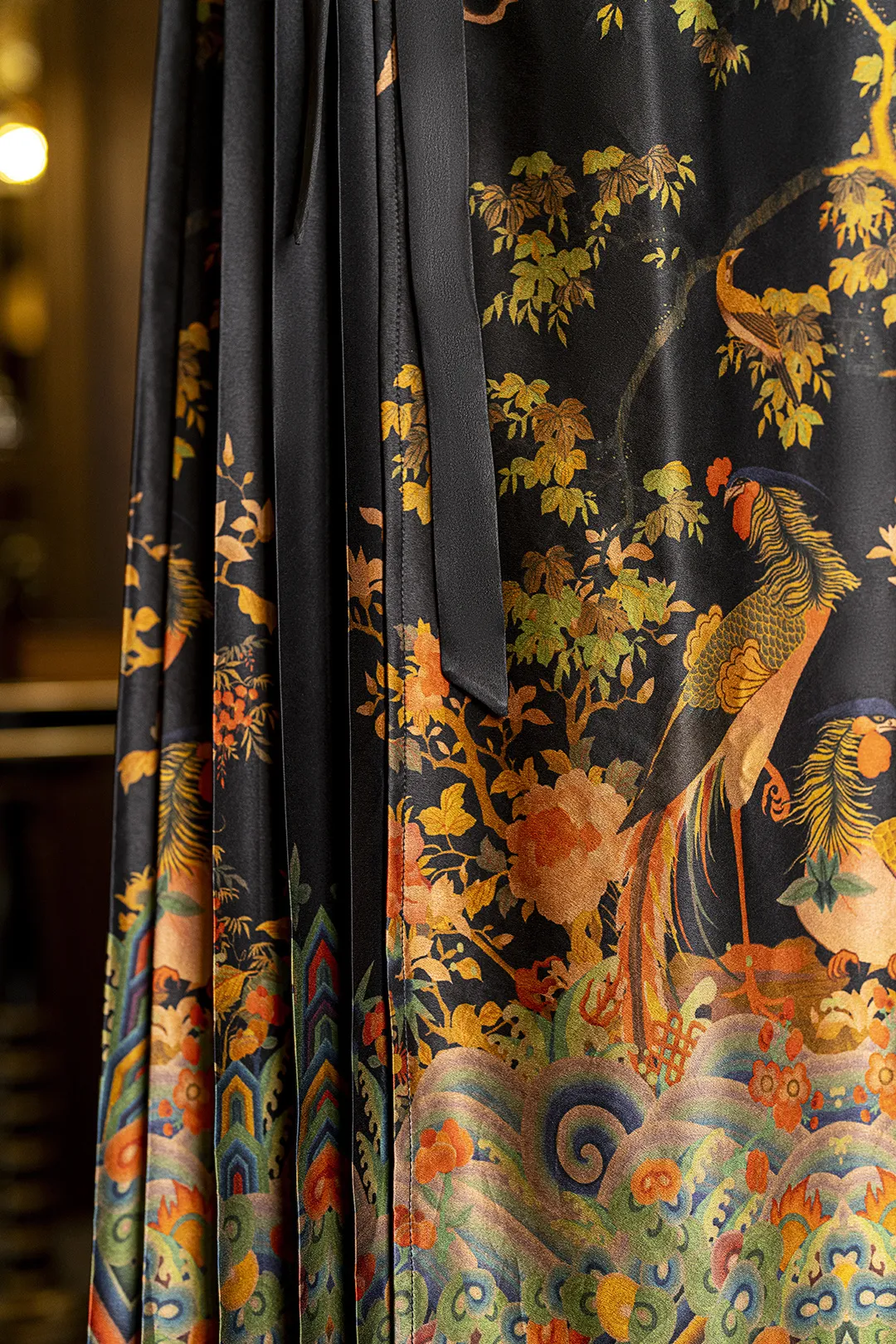Today, I want to talk about the patterns and prints of Qipao. Prints are the soul of a Qipao, a distinct marker that lights up the dress, sets its style, and reflects the wearer's artistic charm. In traditional Chinese culture, they're not just decoration; they carry auspicious meanings, adding cultural depth to the Qipao. The exquisite craftsmanship subtly conveys style and beauty, a method linked to aristocratic aesthetics. Indeed, Qipao has always symbolized noble beauty, a blend of status and refined taste. From centuries - old silk traditions to meticulous hand - crafting, every detail makes Qipao a rare work of art. Among these elements, prints play a crucial role. Today, let's explore the beauty and types of common Qipao prints.
Floral Prints
Floral prints are the most widespread in Qipao designs. From spring orchids to autumn chrysanthemums, and various plants, they serve as the main focus, accents, or borders. These designs draw on plant characteristics and symbolism, with auspicious meanings and people's aspirations for beauty. The plum blossom, or 'Five Blessings Flower,' symbolizes longevity, success, peace, happiness, and luck due to its five petals. As the first spring flower, it's the 'Queen of Flowers' and a top 'Four Gentlemen' (plum, orchid, bamboo, and chrysanthemum). Its delicate yet resilient nature, often with branches, shows perseverance.
In Qipao designs, plum blossoms combined with magpies create the 'Happiness at the Brow' motif, symbolizing joy and the five blessings. Orchids, pure and elegant, convey a serene aesthetic. In ancient China, they were associated with virtuous individuals, favored by scholars and nobility.
Bamboo, evergreen and resilient, symbolizes integrity and humility. Its homophone with 'congratulations' adds a celebratory meaning, like 'Bamboo Reports Peace.' Chrysanthemums, resilient and long - lived, symbolize stability and prosperity. Peonies, the 'King of Flowers,' represent wealth and nobility, often paired with phoenixes in 'Phoenix Among Peonies,' symbolizing harmony and prosperity. Lotus flowers, pure and elegant, are associated with integrity and grace. Their homophone with 'honesty' adds moral symbolism. Begonia flowers, the 'Fairy of Flowers,' symbolize wealth and are often abstracted into geometric patterns like the 'Cross Begonia.'
Landscape Prints
Landscapes featuring mountains, water, and pavilions are another highlight, evoking harmony with nature. They usually appear in combinations, with mountains, water, trees, grass, and pavilions, having both realistic and freehand elements, expressing the hope of enjoying nature and the beauty of rural scenery.
Animal Prints
Animal prints are equally significant, with deep symbolic meanings. The phoenix, a symbol of marital bliss, is common in wedding Qipaos. Cranes, representing longevity and nobility, are often depicted with clouds or pine trees. Golden pheasants, symbolizing authority and harmony, are popular in pairs.
Mandarin ducks, emblematic of marital fidelity, are often shown by water or with lotus ponds. Butterflies, representing joy and longevity, are paired with flowers for harmonious marriages. Fish, symbolizing wealth and abundance, are combined with aquatic plants or other auspicious motifs. For example, the phoenix in wedding Qipao brings the blessing of a happy marriage. The crane, associated with immortals, represents longevity and nobility. The golden pheasant, a symbol of authority, shows a couple's harmonious relationship when in pairs. Mandarin ducks always symbolize a faithful marriage. Butterflies and fish also carry beautiful wishes for marriage and wealth.
